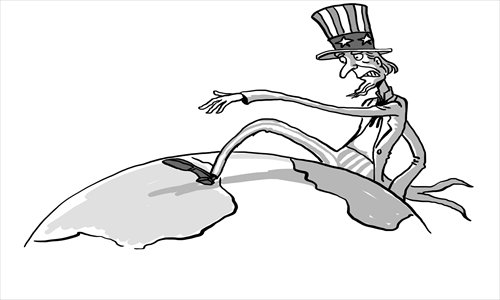US faces long, winding road back to Asia with potential potholes ahead

US President Barack Obama visited Myanmar last week, taking the US one step closer to the Asia Pacific. In the eyes of some Western media, he had the manner of a "returning hero."
Indeed, once the US' Asia pivot is further carried out, it will seriously damage the current power of balance between China and the US. If the US continues to hold its unfair stance on the South China Sea issue, the two may move from competition to confrontation.
However, there can be a number of constraints for the US to face in carrying out its strategy, which adds uncertainty to its mission and offers China room to react to it.
Military spending cuts by the US will largely affect its deployment in East Asia. Due to the financial crisis, the US in the middle of recovery is not able to earmark as much military spending as it did in the past. Pentagon cuts since the end of 2011 have been rising, which means that the US' military strategy will be restrained in the future, thus affecting the further deployment of its Asia pivot.
Changes at the top in the US may also affect the continuity of its strategy. Secretary of State Hillary Clinton has said that she will leave office, thereby costing the Asia pivot strategy its main advocate.
The US' engagement in other regions will divert its attention from Asia. The disturbances in the Middle East bring fluctuations in oil prices, taking a toll on the US economy. Meanwhile, Iran's direct confrontation with the US over nuclear issue complicates US diplomacy in the region.
In addition, whether the diplomatic, military and economic strategies of the US could be successfully carried out depends on the support it gets from East Asian countries.
However, East Asian countries do not see eye-to-eye with the US in terms of strategic objectives and tactics. Many hedge their bets on both sides as they rely on China's economy and US' protection.
This differs from the US' aim of dominating the region by wooing these countries and isolating China.
In recent years, due to China's development and the opening-up of the Chinese market, East Asian countries and China have deepened their economic cooperation and become mutually dependent.
In terms of tactics, the discrepancy between East Asian countries and the US exists in the operation of the Trans-Pacific Partnership Agreement (TPP). The gloomy economy in the US has cost the TPP its main driving force. A rigid policy will not get support from the majority of countries in the region, given their varied economic development.
China should remain highly attentive if the US' Asia pivot moves ahead. But China needn't overreact. China should expand cooperation with the US, making the two rely on each other. Meanwhile, it should enhance mutual trust with ASEAN countries to create a favorable sphere for its own development.
Jin Canrong is vice director of the School of International Studies at Renmin University of China and Huang Da is a postgraduate student of the school. opinion@globaltimes.com.cn